
This is the second part of our review of the recent Whisky Live event in London. Whisky Live is an event that showcases the diverse world of whisky to the general public. There are two events in the UK - one in London and the other in Glasgow. They are the biggest whisky shows in the UK and this year's London show marked the 10th anniversary of the event being held in the city.
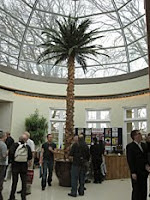 This year, the venue was the prestigious Hurlingham Club - a posh members only club on the banks of the River Thames. For two days last weekend they allowed the commoners in to drink some whisky. We were both in attendance for both days of the show - Matt doing his 'day job' selling whisky to people and Karen doing her 'favourite hobby' ... drinking whisky! Between us, we sampled plenty of whisky and decided to split the reviews in to two parts. The first part included the new releases and other special Whisky Live bottlings that were on offer. This second part concentrates on some of the other interesting whiskies that we sampled.
This year, the venue was the prestigious Hurlingham Club - a posh members only club on the banks of the River Thames. For two days last weekend they allowed the commoners in to drink some whisky. We were both in attendance for both days of the show - Matt doing his 'day job' selling whisky to people and Karen doing her 'favourite hobby' ... drinking whisky! Between us, we sampled plenty of whisky and decided to split the reviews in to two parts. The first part included the new releases and other special Whisky Live bottlings that were on offer. This second part concentrates on some of the other interesting whiskies that we sampled.Aberlour 18 years old
This whisky is one of the rarer single malts in the core range of this popular Speyside distillery. Aberlour are well known for their use of quality sherry casks during maturation and is in the top 10 for worldwide single malt sales and number one in France, who are the biggest consumers of whisky in the world. This 18 years old is dark amber in colour and has a rich, fruity nose - dried fruits (think of raisins especially), candied orange peel, sandalwood and waxy furniture polish. On the palate, the whisky is velvety and soft with a lovely combination of notes - rich sweet caramel, raisins, plenty of dried orange, nuts (imagine walnuts) and wood spice (think of cinnamon). The finish is long and sweet with the cinnamon putting in a good appearance. A great example of a sherry cask matured whisky.
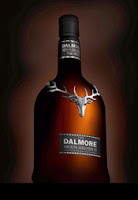 Dalmore King Alexander III
Dalmore King Alexander IIIDalmore have produced this limited edition that contains whiskies that have been matured in no less than six different styles of cask - bourbon, Madeira, marsala, Port, red wine and sherry. It is named to commemorate the ancestor's of the local Mackenzie clan who rescued King Alexander III from bandits in 1293. This is one hell of a complex whisky - the colour is a dark reddish amber and the nose is rich and sweet. There are distinct notes of caramel, dried fruit (think of raisins, sultanas and candied orange peel), almonds, wood spice (cinnamon especially) and dark espresso coffee. The palate is rich and silky with plenty of caramel, dried fruit and orange up front. Notes of nutmeg spice, coffee, dark chocolate, almonds, cereal grains, fudge and chilli join to create huge complexity. The finish is soft, sweet and very enjoyable. Cracking stuff but very rich.
Longrow 14 years old
Longrow is produced for roughly one month of the year at the cult Springbank distillery in the Campbeltown region of Scotland. It has a much higher peat level than regular Springbank and therefore is much smokier in character. This 14 years old is pale in colour and the nose is light and fresh with a lovely mix of fresh green apple, vanilla, dried grass and earthy peat smoke (imagine damp moss). The palate feels richer with some initial sweet vanilla and obvious smoky peat (think of damp earth, moss and iodine). The iodine note gives a bitter edge to the sweetness and has a hint of disinfectant to it. Further grassiness (think of straw or hay) comes through and leads through to an enjoyable and decently long finish. The smokiness is more ashy on the finish. A very good and very drinkable dram.
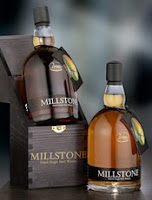 Millstone Dutch single malt
Millstone Dutch single maltDutch whisky, I hear you cry! Yes, indeed - this single malt is produced at the Zuidam distillery in the town of Baarle Nassau, to the west of Eindhoven. The distillery was founded in 1974 and is run by father and son Fred and Patrick van Zuidam. Initially they produced various spirits including genever gin and vodka, with whisky being first made in 1998. They currently produce 20,000 litres of whisky per year. This whisky has no age stated and is light and delicate on the nose. There is plenty of cereal grains here with some vanilla and honey also. A whiff of raw spirit is evident but not off putting. The palate is again light with a pleasant combination of grain (lots), nuts (think of almonds and coconut), some grassiness (imagine hay), honey, vanilla and a hint of nutmeg-like spice. The finish is short and sweet. Interesting stuff and interesting to try.
Miyagikyo 10 years old
Miyagikyo is located on the eastern coast of Japan's main island of Honshu to the north of Tokyo and it was founded in 1969 by the Nikka Corporation. Miyagikyo's whiskies have won many awards in recent years around the globe. We had never tried any Miyagikyo ... until Whisky Live that is! The colour is golden and the nose is soft, sweet and almost understated. There is a lovely mix of vanilla, caramel, honey and something floral. On the palate, it feels silky and smooth with a pleasant creaminess that incorporates those elements from the nose with some woody spices (think of cinnamon and nutmeg), toffee and earthy ginger. The finish is drier than the palate and is oaky and spicy in nature. Top stuff.
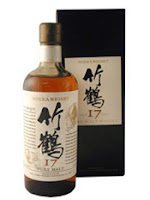 Nikka 'Taketsuru' Pure Malt 17 years old
Nikka 'Taketsuru' Pure Malt 17 years oldThis is another whisky produced by the Nikka Corporation. It is a vatting made from single malts (hence the name Pure Malt) from both of their distilleries - Miyagikyo and Yoichi. Yoichi distillery is located on the northern Japanese island of Hokkaido and was founded by Masataka Taketsuru (who lends his name to this whisky) in 1934. This makes it Japan's second oldest whisky distillery behind Yamazaki. This Pure Malt has an expressive nose with an interesting combination of aromas - vanilla, malty cereal grains, dried grasses, orange oil and just a whiff of earthy peat. The palate is soft, smooth, creamy and velvety with the vanilla, grains and orange oil particularly prominent. The cereal grains add a pleasant bitterness to the other sweeter elements. The finish is drier than expected and is slightly spicier (think of ginger and nutmeg) and smokier (imagine bonfire ash).
Scapa 16 years old
The Scapa distillery is located in the Orkney islands and this bottling was released a couple of years ago, to replace a 14 years old in their small core range. The low production capacity dictates that Scapa whiskies are hard to find but are highly sought after and regarded. The colour of this whisky is a vibrant gold and the nose is delicious. There is plenty of vanilla, coconut and hazelnuts and these are carried through to the creamy, velvety palate. The combination of flavours that come through on the palate is fantastic - hazelnut praline, some milk chocolate, vanilla, coconuts and a hint of fresh peach. It feels very soft and sumptuous. The finish is fairly short but expressive with the coconut and hazelnut elements particularly prominent. An absolutely lovely and well made dram.
Van Winkle Rye whiskey
One of the few American rye whiskies at the show this year so it was an opportunity not to be turned down. Van Winkle was founded by Julian 'Pappy' Van Winkle Snr in 1893 and is now operated by the fourth generation of his family (one of these, Preston Van Winkle, was at the show). The company's range of whiskey is made at the Buffalo Trace distillery in Kentucky and follows strict secretive recipes that have been handed down. This whiskey is dark amber and has an intense nose. It is packed with plenty of orange (think of candied peel or marmalade), vanilla, cereals (think of the bitter husks especially) and coconut. On the palate, it is equally intense with the plenty of wood spice (imagine nutmeg and cinnamon) joining the orange, vanilla, cereal grains and coconut from the nose. The combination is fantastic with the rye cereals adding a lovely bitter edge to the sweetness. The finish is long and spicy. A cracker of a dram!
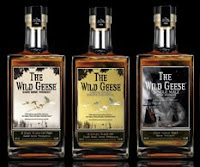 Wild Geese Irish whiskey
Wild Geese Irish whiskeyThe Wild Geese are a range of Irish whiskies that are bottled and distributed by an independent company. These whiskies are produced to a specific recipe at the Cooley distillery and are available in 38 countries around the world. The name of the range is taken from the name given to Irish soldiers who fought in various European wars in the 17th and 18th centuries - they were known as 'wild geese'. Three whiskies were available for tasting at the show - two blends and one single malt.
First up is the Rare Irish, one of the blends. This is very light and pale lemon in colour and the nose is delicate (lemon zest, vanilla and rose petals). The palate is equally light and has a fresh vibrancy to it. Delicate flavours such as vanilla, honey, malty cereals and zingy lemon are present. The finish is short and crisp. Next up is the Fourth Centennial, a limited edition blend containing some older whiskies. This is richer with a combination of vanilla, cereals (imagine porridge oats), wood spice (think of nutmeg) and a lemony tang on the nose. The palate exhibits similar characteristics but has more nutmeg spice and the vanilla is sweeter and more reminiscent of marzipan. The finish is of decent length and is drier and oaky. Finally, the Single Malt. The nose is fresh with plenty of vanilla, coconut and cereal grains. On the palate it is light and refreshing with the elements from the nose being joined by some toffee, a hint of earthy peat smoke and some peppery spices. The finish is sweet and enjoyable.

No comments:
Post a Comment